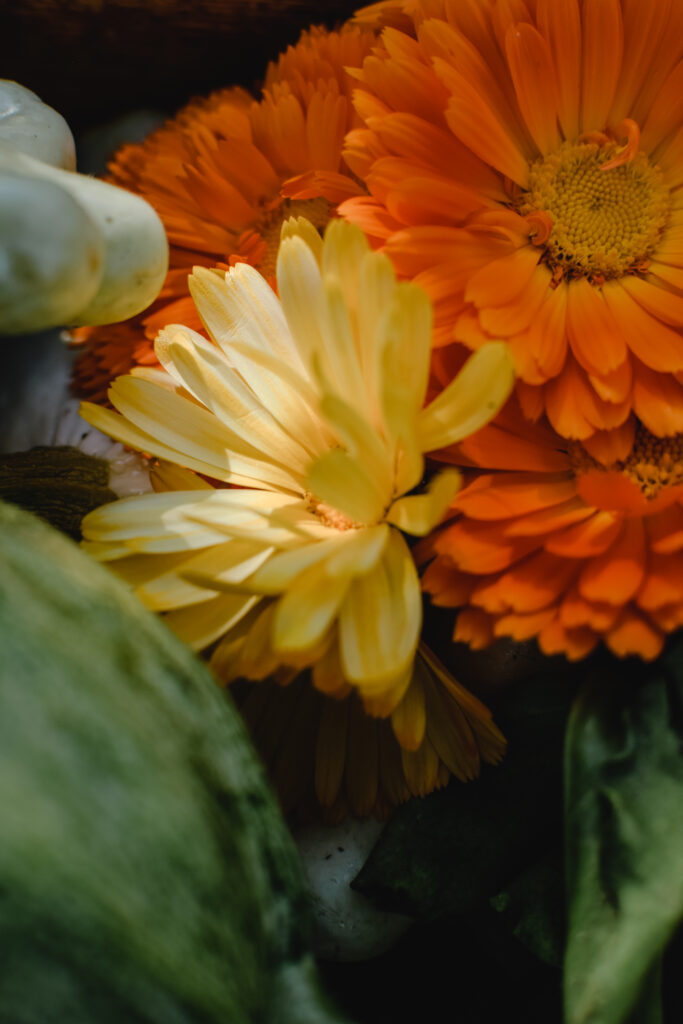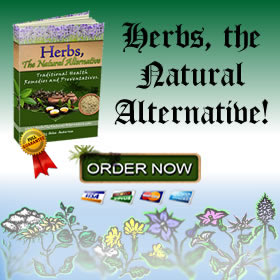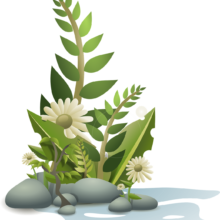What Is Calendula And Why Is It A Must-Have In Your Garden?
Imagine a garden vibrant with colorful blooms, radiating richness and vitality. In this oasis, there is one plant that stands out – Calendula. But what is Calendula exactly, and why should it be a staple in your garden? Well, my friend, let me tell you. Calendula, also known as the pot marigold, is a remarkable flower that not only adds beauty to your outdoor space but also offers a myriad of practical benefits. From its medicinal properties to its ability to attract pollinators, Calendula is a must-have in any green thumb’s repertoire. So, grab your gardening gloves and let’s explore the wonders of Calendula together.

Benefits of Calendula in Your Garden
Calendula, also known as Pot Marigold, is a versatile and beneficial plant to have in your garden. Not only does it add a vibrant splash of color to any landscape, but it also offers a range of advantages that can greatly enhance the overall health and productivity of your garden.
Attracts Beneficial Insects
One of the primary benefits of having calendula in your garden is its ability to attract beneficial insects. The bright yellow and orange flowers of calendula act as a magnet for a variety of pollinators, such as bees and butterflies. These insects play a vital role in the pollination of plants, ultimately leading to increased fruit and vegetable yields. Additionally, calendula also attracts predatory insects like ladybugs and lacewings, which help control populations of garden pests naturally.
Improves Soil Health
Another advantage of growing calendula is its ability to improve soil health. Calendula has deep root systems that help break up compacted soil, allowing for better water drainage and root development. The plant’s roots also release organic matter into the soil as they decompose, enriching it with essential nutrients. Additionally, calendula acts as a living mulch, protecting the soil from erosion and reducing weed growth.
Combats Garden Pests
Calendula is not just a pretty flower; it also serves as an effective natural remedy for combating garden pests. The strong aroma of calendula can repel a range of pests, including aphids, whiteflies, and nematodes. Planting calendula near susceptible plants can act as a deterrent, keeping these unwanted pests at bay. Additionally, calendula has been found to contain natural chemical compounds that have insecticidal properties, effectively controlling pest populations without the use of harmful chemicals.
Adds Color to Your Garden
Last, but certainly not least, calendula adds a stunning burst of color to your garden. With its vibrant yellow, orange, and maroon flowers, calendula can brighten up any landscape and create a visually appealing garden. Whether planted in flower beds, container gardens, or even as border plants, calendula is sure to catch the eye and bring aesthetic beauty to your outdoor space.
Calendula Varieties
Calendula comes in various varieties, each with its unique characteristics and growing requirements. Here are some of the most popular types of calendula:
Officinalis (Pot Marigold)
Officinalis, also known as Pot Marigold, is the most common type of calendula. It features vibrant orange and yellow flowers and can grow up to two feet tall. Pot Marigold is known for its medicinal properties and is widely used in herbal remedies for its skin-soothing and anti-inflammatory effects.
Arvensis (Field Marigold)
Arvensis, or Field Marigold, is a tall-growing variety of calendula that can reach up to three feet in height. It produces smaller, pale yellow flowers and is often used in wildflower meadows and naturalistic garden settings due to its sprawling nature.
Elegans (Mexican Marigold)
Elegans, also referred to as Mexican Marigold, is a compact variety of calendula that typically reaches a height of one foot. It is known for its fiery orange and red flowers and is often used as a border plant or in container gardens. Mexican Marigold is also cherished for its strong aromatic scent.
Tripterocarpa (Japanese Marigold)
Tripterocarpa, commonly known as Japanese Marigold, is a unique variety of calendula native to Japan. It has bright yellow flowers with long, pointed petals and can grow up to two feet tall. Japanese Marigold is often used for ornamental purposes and can be a stunning addition to any garden.
When choosing a calendula variety for your garden, consider factors such as their height, color, and growth habit to ensure they complement your overall garden design and suit your specific needs.
How to Grow Calendula
Growing calendula is relatively simple and rewarding. By following a few basic steps, you can enjoy an abundant display of colorful flowers and reap the many benefits this plant has to offer.
Choosing the Right Location
Calendula thrives in full sun exposure, preferably in a location that receives at least six hours of direct sunlight per day. While it can tolerate partial shade, it may result in reduced flower production. Ensure you select a spot with well-drained soil, as calendula can be prone to root rot if planted in waterlogged or heavy clay soils.
Preparing the Soil
Before sowing calendula seeds, it is essential to prepare the soil. Start by removing any weeds or debris from the planting area. Loosen the soil with a garden fork or tiller to a depth of about six inches. Calendula prefers moderately fertile soil, so incorporating organic matter such as compost or well-rotted manure can help improve the soil structure and provide essential nutrients.
Sowing Seeds
Calendula seeds can be sown directly into the ground or started indoors. If starting indoors, sow the seeds in seed trays or individual pots about six to eight weeks before the last frost date. Fill the containers with a seed-starting mix and plant one seed per pot, pressing it gently into the soil. Keep the soil consistently moist until germination occurs.
For direct sowing in the garden, wait until after the last frost has passed and the soil has warmed up. Sow the seeds about half an inch deep, spacing them six to twelve inches apart. Cover the seeds with soil and water gently.
Watering and Care
While calendula is relatively drought-tolerant, regular watering is essential, especially during dry spells. Keep the soil evenly moist but not waterlogged, as excessive moisture can lead to root rot. Water the plants at the base to prevent water from splashing onto the leaves, which can promote fungal diseases.
To promote healthy growth and encourage continuous flowering, consider applying a balanced, organic fertilizer every four to six weeks. However, avoid over-fertilizing, as this can result in lush foliage but reduced flower production.
Harvesting Calendula Flowers
As calendula is primarily grown for its beautiful flowers, knowing when and how to harvest them is crucial. Flowers can be harvested as soon as they reach full bloom. Grasp the stem just below the flower head and gently twist or cut it off. Leaving a few flowers on the plant can attract beneficial insects and prolong blooming.
If you wish to preserve the flowers for culinary or medicinal purposes, harvest them in the morning after the dew has dried but before the sun is at its strongest. Dry them thoroughly before storing them in a cool, dark place.
Medicinal and Culinary Uses of Calendula
Apart from its ornamental value, calendula is prized for its numerous medicinal and culinary uses. From topical treatments to delightful teas and culinary creations, calendula can be a versatile addition to your daily life.
Topical Treatments for Skin
Calendula is renowned for its soothing and healing properties, making it a popular ingredient in skincare products. The flowers can be used to create infused oils or salves, which can help relieve skin irritations, minor burns, cuts, and bruises. Calendula oil can be directly applied to the skin or used as a base for homemade creams and lotions.
Anti-inflammatory Properties
In addition to its topical uses, calendula also possesses anti-inflammatory properties when consumed internally. It contains compounds that can help reduce inflammation in the body, making it beneficial for various conditions such as arthritis, digestive disorders, and inflammatory skin conditions like eczema and dermatitis.
Calendula Tea
Enjoying a cup of calendula tea can be a delightful and soothing experience. Calendula tea is made by steeping dried calendula flowers in hot water. This herbal infusion is believed to have numerous health benefits, including improved digestion, detoxification, and immune support. It can also be used topically as a rinse for irritated skin or as a gargle for soothing a sore throat.
Calendula in Salads and Soups
Calendula petals have a mildly spicy and peppery flavor, making them an excellent addition to salads, soups, and other culinary creations. Sprinkle the petals over green salads for a pop of color, or add them to soups, stews, or pasta dishes to impart a subtle, savory taste. The petals can also be used to garnish desserts or infused into honey for a unique and flavorful sweetener.

Companion Planting with Calendula
Calendula’s many benefits extend beyond its individual properties. It is also an excellent companion plant that can enhance the health and productivity of neighboring plants.
Attracts Pollinators
Calendula’s vibrant flowers act as a beacon for pollinators such as bees and butterflies. By planting calendula alongside other flowering plants that require pollination, you can increase the presence of these beneficial insects in your garden, leading to improved fruit and vegetable yields.
Deters Harmful Insects
While calendula attracts pollinators, it also repels harmful insects such as aphids, whiteflies, and nematodes. Interplanting calendula with susceptible plants can act as a natural deterrent, reducing pest populations without the need for chemical pesticides.
Improves Growth of Other Plants
The deep-rooted nature of calendula helps improve soil structure and overall soil health. When planted alongside shallow-rooted plants, calendula can help enhance their growth by improving water penetration and nutrient availability in the soil.
Ideal Companions for Calendula
Calendula can be planted alongside various flowers, herbs, and vegetables to create a harmonious and beneficial garden ecosystem. Some ideal companions for calendula include marigolds, lavender, sage, tomatoes, lettuce, and cucumbers. However, it is important to consider the specific growing requirements and compatibility of each plant before companion planting.
Calendula Care and Maintenance
Taking proper care of calendula plants will ensure their healthy growth and vibrant blooms throughout the season. Here are some essential care tips to keep in mind:
Sunlight and Temperature Requirements
Calendula thrives in full sun but can tolerate partial shade. However, sufficient sunlight is crucial for optimal flower production. Ideal daytime temperatures range between 65 and 75 degrees Fahrenheit, while nighttime temperatures should not drop below 55 degrees Fahrenheit. Calendula is relatively cold-tolerant but may struggle in intense heat.
Watering and Fertilizing
Water calendula regularly, especially during dry spells. Aim to keep the soil evenly moist but not waterlogged. Mulching around the plants can help conserve moisture and reduce weed growth. While calendula generally does not require heavy fertilization, applying a balanced, organic fertilizer every four to six weeks can provide essential nutrients for healthy growth and vibrant blooms.
Deadheading and Pruning
To encourage continuous flowering, regularly deadhead spent blooms by removing them from the plant. This will redirect the plant’s energy towards producing new flowers. Additionally, pruning back calendula plants by one-third their height after the first wave of flowers will promote bushier growth and a second round of blooms later in the season.
Pest and Disease Control
Calendula is relatively resistant to pests and diseases. However, aphids, slugs, and snails may occasionally be problematic. Monitor the plants regularly and address any pest issues promptly. Introducing natural predators such as ladybugs or using organic pest control methods can help keep pest populations in check. Avoid overhead watering, as wet foliage can promote fungal diseases. If necessary, treat fungal infections with a suitable organic fungicide.

Calendula in Traditional Medicine
Calendula has a long history of use in traditional medicine, dating back centuries. Throughout different cultures, it has been treasured for its numerous healing properties and its versatility in treating various health conditions.
Historical Uses
Calendula has been used in traditional medicine for centuries, with records of its medicinal use found in ancient Egyptian, Greek, and Roman civilizations. It was often employed to treat wounds, burns, skin irritations, and gastrointestinal ailments.
Healing Properties
Calendula possesses anti-inflammatory, antimicrobial, and antifungal properties, which can help alleviate a range of health issues. It is particularly known for its ability to promote wound healing and reduce inflammation. The flowers contain bioactive compounds, such as flavonoids and triterpenoids, which contribute to its medicinal properties.
Skin Conditions
Calendula is widely used in the treatment of various skin conditions, including eczema, dermatitis, and minor burns. Its soothing and anti-inflammatory properties can help calm irritation, reduce redness and swelling, and aid in the regeneration of healthy skin.
Digestive Health
Calendula has traditionally been used to support digestive health and alleviate gastrointestinal disturbances. It can help soothe inflammation in the digestive tract, relieve stomach ulcers, and promote healthy digestion. Calendula tea or tinctures are often recommended for these purposes.
While calendula has a rich history in traditional medicine, it is essential to consult with a healthcare professional before using it as a treatment for specific health conditions.
Calendula Recipes
In addition to its therapeutic uses, calendula can be incorporated into various homemade recipes, allowing you to enjoy its flavor and benefits in delightful and creative ways.
Calendula Oil
Calendula-infused oil is a versatile product that can be used in both culinary and medicinal applications. To make calendula oil, infuse dried calendula flowers into a carrier oil, such as olive or grapeseed oil. This process involves allowing the flowers to steep in the oil for several weeks to transfer their therapeutic properties. Calendula oil can be used for cooking, added to salad dressings, or used as a topical treatment for skin irritations and minor wounds.
Calendula Salve
Calendula salve is a soothing and healing ointment that can be made at home. It combines the healing properties of calendula-infused oil with beeswax and other ingredients to create a nourishing and protective balm. Calendula salve can be used to alleviate dry skin, minor cuts, rashes, and insect bites.
Calendula Infused Honey
Infusing honey with dried calendula flowers can create a unique and flavorful sweetener. Simply combine dried calendula flowers with raw honey in a jar and allow them to infuse for several weeks. Calendula-infused honey can be used in teas, drizzled over desserts, or even enjoyed on its own.
Calendula Tea Blend
Calendula flowers can be blended with other herbs and flowers to create delicious and aromatic herbal tea blends. Combine dried calendula flowers with chamomile, lavender, or mint for a soothing and calming floral infusion. Experiment with different combinations to find a blend that suits your taste preferences and desired health benefits.
Harvesting and Drying Calendula
To maximize the shelf life and preserve the vibrant colors of calendula flowers, proper harvesting and drying techniques are crucial.
When to Harvest Calendula Flowers
Calendula flowers should be harvested when they are fully open and at their peak bloom. Unlike many other flowers, calendula’s petals spread flat, indicating that they are ready for harvesting. Avoid harvesting flowers that have started to wilt or turn brown.
The best time to harvest calendula flowers is in the morning after the dew has evaporated but before the sun is at its strongest. It is during this time that the flowers contain the highest concentration of beneficial compounds.
Methods of Drying Calendula
To ensure proper drying, carefully remove the petals from the flower heads, discarding any damaged or discolored parts. Spread the petals in a single layer on a clean, dry surface, such as a drying rack or a piece of cheesecloth. Allow them to dry in a well-ventilated area away from direct sunlight. Turn the petals occasionally to promote even drying.
Alternatively, you can tie bundled stems together and hang them upside down in a cool, dark place. This method allows the flowers to dry naturally and retain their vibrant colors.
Storing Dried Calendula
Once the calendula petals are thoroughly dried, store them in an airtight container in a cool, dark place. Properly dried and stored calendula flowers can maintain their quality for up to a year. Label the container with the date of harvest to ensure freshness.
Potential Side Effects and Precautions
While calendula is generally safe for most people, there are a few potential side effects and precautions to be aware of.
Allergic Reactions
Individuals with known allergies to plants in the Asteraceae family, which includes ragweed, chrysanthemums, and daisies, may be sensitive to calendula. It is advisable to perform a patch test or consult with a healthcare professional before using calendula topically or consuming it.
Interaction with Medications
Calendula may interact with certain medications, such as sedatives, anticoagulants, and antiplatelet drugs. If you are taking any medications, consult with your healthcare provider before using calendula for medicinal purposes to prevent potential interactions or contraindications.
Avoiding Overconsumption
As with any herbal remedy or dietary supplement, it is essential to use calendula in moderation. While it is generally safe for consumption, excessive intake of calendula tea or supplements can lead to nausea, vomiting, or diarrhea. Follow recommended dosage guidelines and discontinue use if any adverse reactions occur.
Consulting a Healthcare Professional
If you are pregnant, breastfeeding, or have any underlying medical conditions, it is important to consult with a healthcare professional before using calendula for medicinal purposes. They can provide personalized advice based on your specific health needs and circumstances.
In conclusion, calendula is a must-have in your garden due to its numerous benefits and versatility. From attracting beneficial insects and improving soil health to its medicinal uses and culinary applications, calendula offers a wealth of advantages that can enhance your garden and overall well-being. By incorporating this beautiful and beneficial plant into your garden, you can enjoy the many rewards it brings for years to come.




